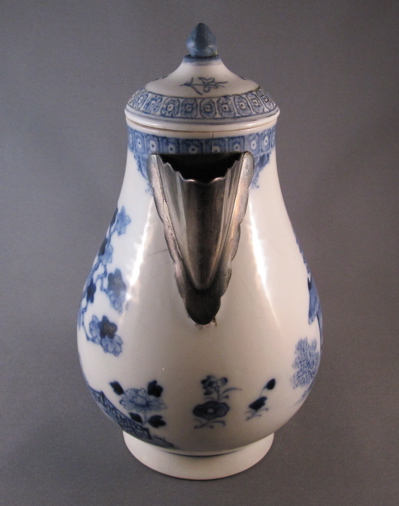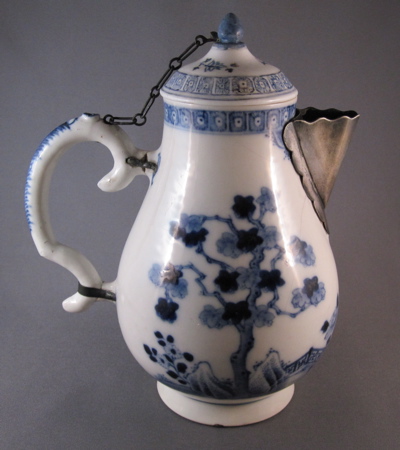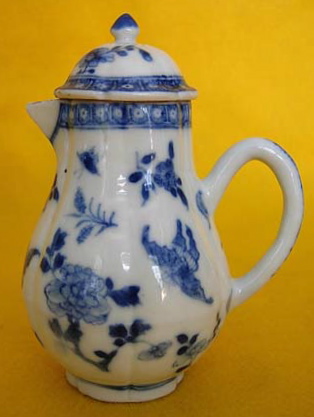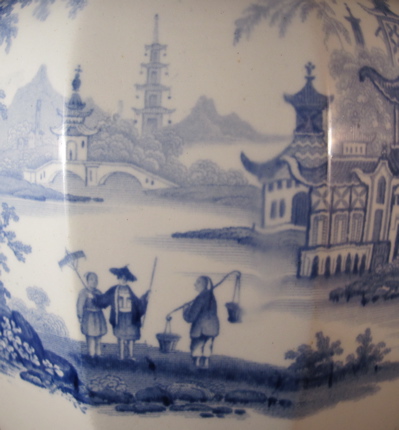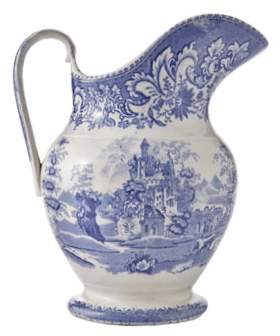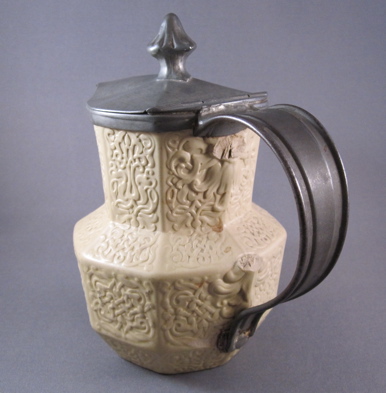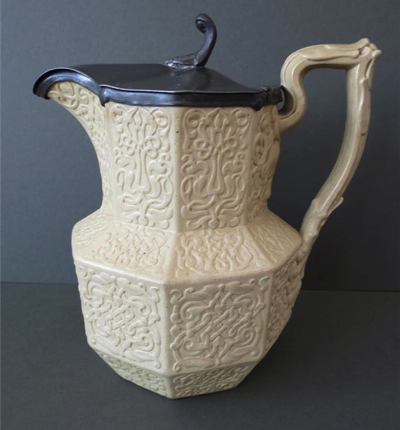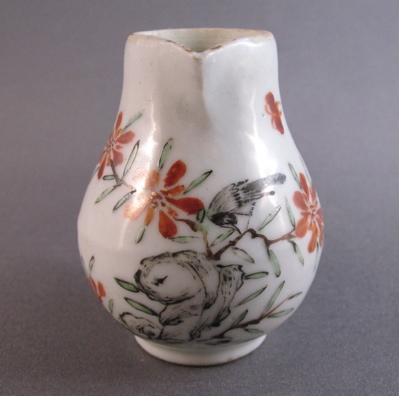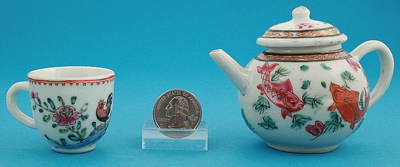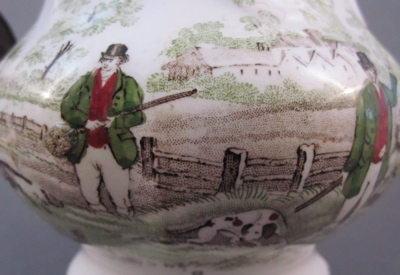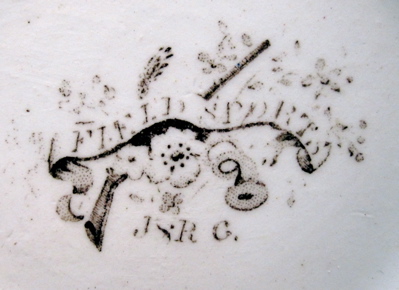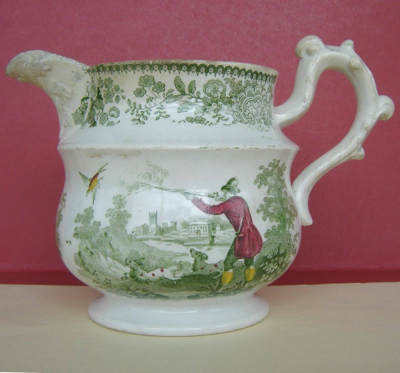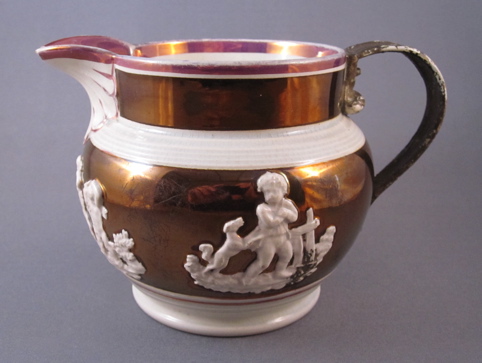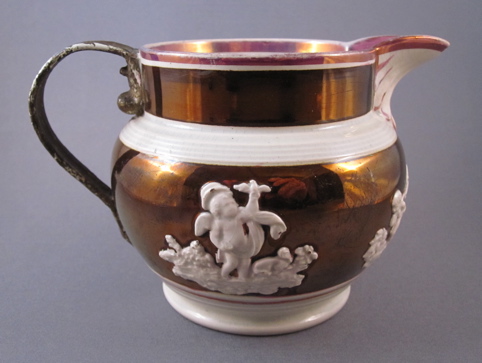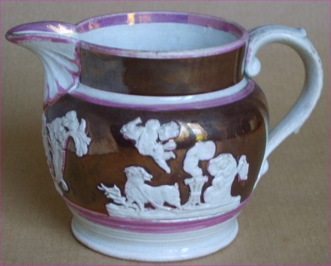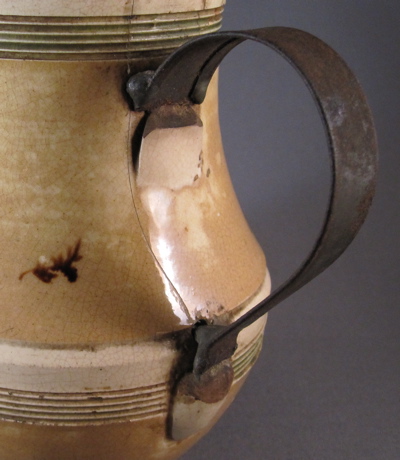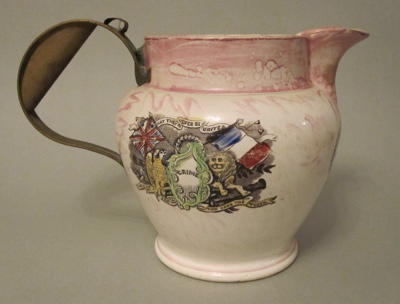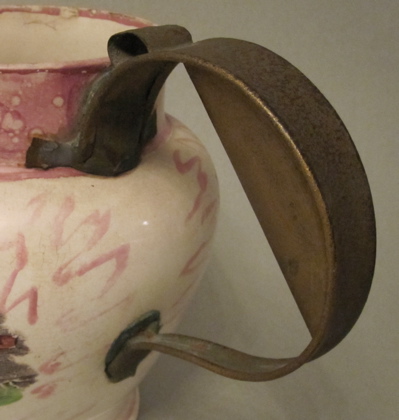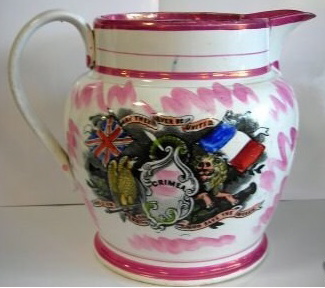For me, the more repair I see on one piece of porcelain the more I like it, and this fine chocolate pot with five separate repairs does not disappoint! This baluster-shaped chocolate pot was made in China in the mid-1800’s but its form was based on German Meissen porcelain of the same period, and was made for export to Europe and North America
A skilled silversmith created a fanciful scallop edged silver spout to replace the more simple original spout, which must have broken off soon after this 8″ high pot was made
Other repairs and replacements which occurred during the next 170 years or so include metal rivets which hold the broken handle back in place; a 20th century plain white replacement lid decorated in blue enamel to match the original…
and a chain attached from the top of the handle to a replaced knob made of composition and painted blue
This chocolate pot with similar form shows what the original spout and lid on my pot would have looked like
Photo courtesy of Richard Gould Antiques

